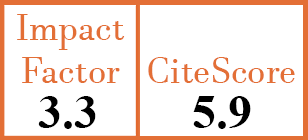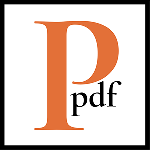Aetiopathogenesis
Neutrophil extracellular traps formation in patients with eosinophilic granulomatosis with polyangiitis: association with eosinophilic inflammation
J. Natorska1, M. Ząbczyk2, J. Siudut3, P. Krawiec4, L. Mastalerz5, A. Undas6
- Institute of Cardiology, Jagiellonian University Medical College, Kraków; and John Paul II Hospital, Kraków, Poland. j.natorska@szpitaljp2.krakow.pl
- John Paul II Hospital, Kraków, Poland.
- John Paul II Hospital, Kraków, Poland.
- Department of Rheumatology, Dietl Hospital, Kraków, Poland.
- 2nd Department of Medicine, Jagiellonian University Medical College, Kraków, Poland.
- Institute of Cardiology, Jagiellonian University Medical College, Krakow; and John Paul II Hospital, Kraków, Poland.
CER9534
2017 Vol.35, N°1 ,Suppl.103
PI 0027, PF 0032
Aetiopathogenesis
Free to view
(click on article PDF icon to read the article)
PMID: 28229830 [PubMed]
Received: 25/04/2016
Accepted : 02/09/2016
In Press: 09/02/2017
Published: 19/04/2017
Abstract
OBJECTIVES:
Eosinophilic granulomatosis with polyangiitis (EGPA) is associated with an inflammation and the presence of antineutrophil cytoplasmic antibodies (ANCA). Thus, we investigated the impact of ANCAs and eosinophilic inflammation on neutrophil activation and extracellular traps (NETs) formation.
METHODS:
We recruited 29 patients in the remission of EGPA (17 ANCA-negative and 12 ANCA-positive, including 7 p-ANCA-positive and 5 c-ANCA-positive patients). Healthy donors’ neutrophils were stimulated with EGPA patients’ serum. NETs formation was assessed by immunofluorescence and scanning electron microscopy.
RESULTS:
EGPA patients presented enhanced ability to generate NETs compared to healthy subjects (20.3±8.2% vs. 2.7±1.5%, p=0.0036). However, there were no differences in NETs formation between ANCA-positive and ANCA-negative patients (23±11.2% vs. 17±6.1%, p=0.15). There was also no correlation between NETs generation and the amount of circulating DNA in EGPA patients. Among ANCA-positive patients, p-ANCA-positives showed the highest percentage of NETs as compared to cANCA-positive and ANCA-negative patients (27.3±10.3% vs. 17.8±10.5% and vs. 17±6.1%, both p<0.01, respectively). Eosinophils number correlated with the percentage of NETs in the whole EGPA group (r=0.53, p=0.039), but we failed to observe the correlation with an eosinophil cationic protein (r=0.49, p=0.058).
CONCLUSIONS:
EGPA patients’ serum has the ability to induce NETosis with no regard to the ANCA status in contrast to other vasculitides, where p-ANCA were considered as the main factor. Interestingly, NETs formation in EGPA patients connected with the number of eosinophils might be of major relevance. Further studies are required to assess which eosinophil-derived factors might be responsible for the neutrophils activation in EGPA patients.


